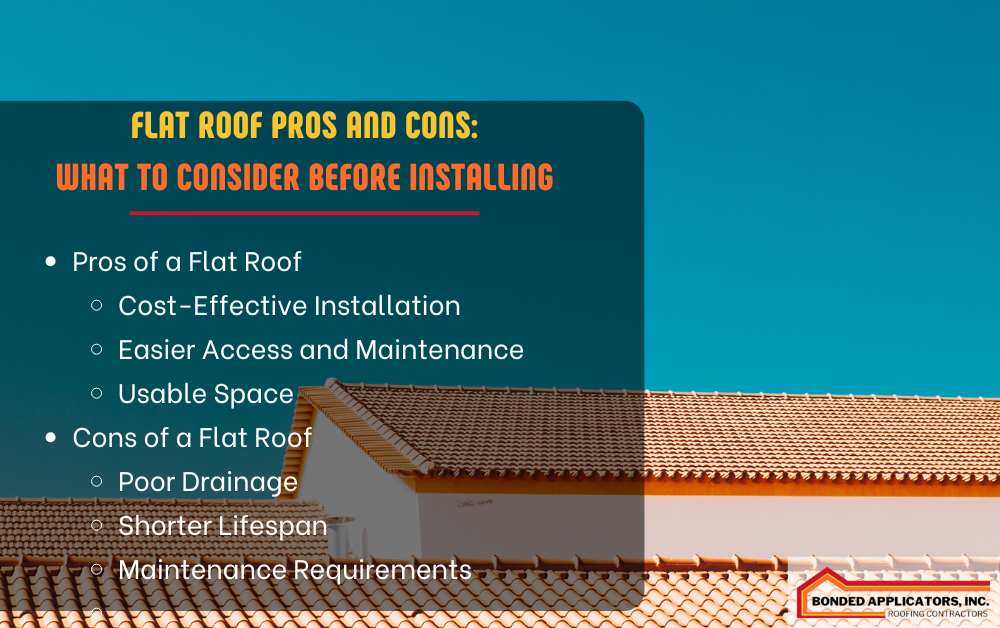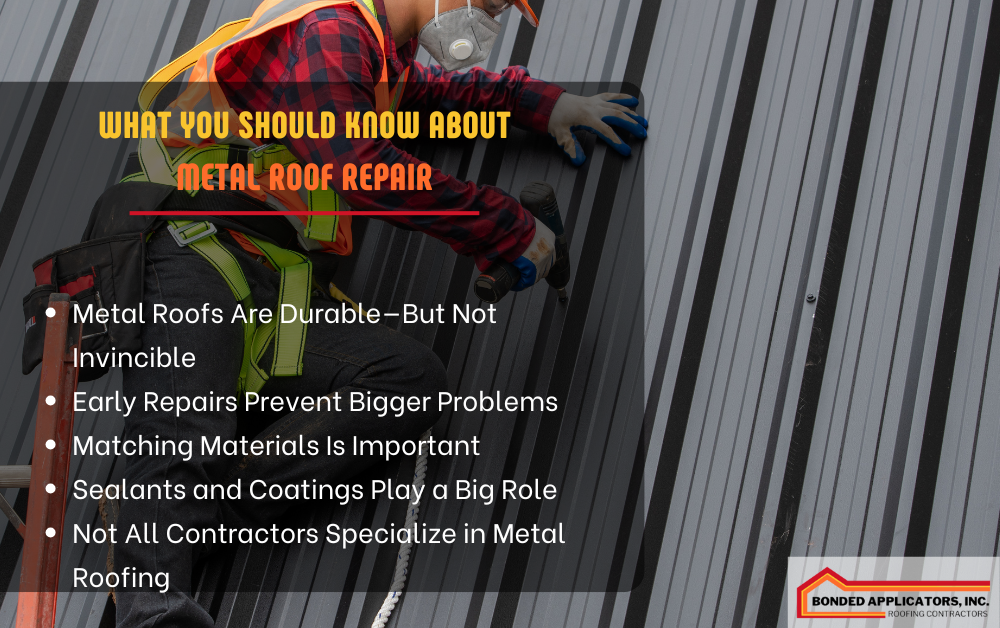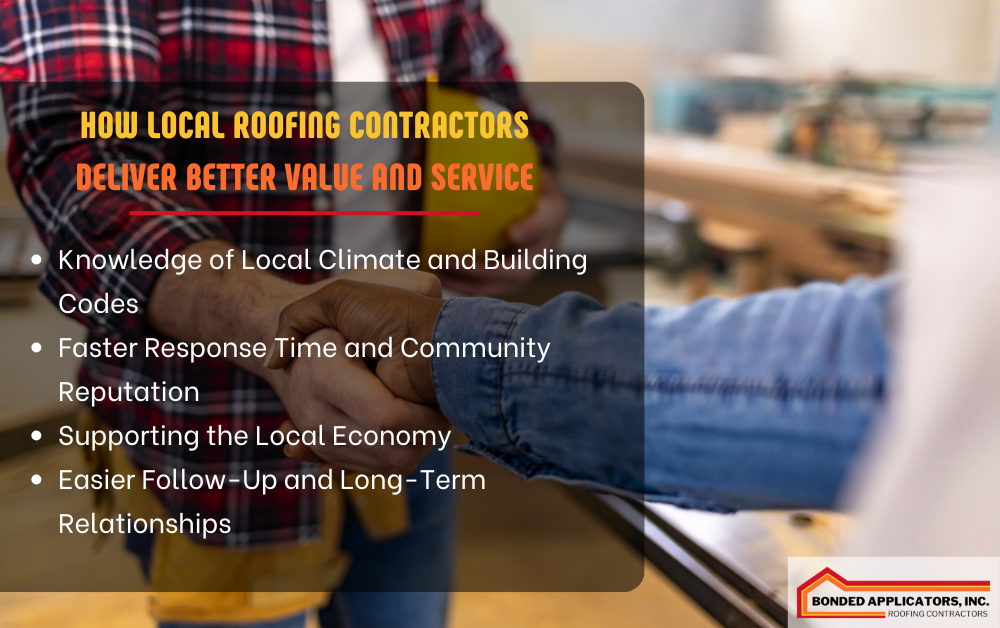Choosing the ideal roof design is a key decision for any property owner, and at Bonded Applicators, we know how important it is to weigh all your options. One style that continues to grow in popularity—especially in urban and modern architecture—is the flat roof. Appreciated for its streamlined design and effective performance, a flat roof offers unique advantages that might make it the perfect fit for your home or building. However, like any roofing system, it also comes with specific challenges. In this blog, we’ll explore both the key benefits and challenges of flat roofs to help you make an educated conclusion that fits your needs, style, and climate.
Pros of a Flat Roof
Cost-Effective Installation
A flat roof is typically more affordable to install than a pitched roof due to its simpler design and reduced material requirements. Labor costs are often lower as well because the flat surface makes the installation process faster and more straightforward. These cost savings can be handsome for commercial buildings or modern homes with large surface areas. Flat roofing systems often require fewer structural supports, which adds to the overall efficiency of the build. For property owners working within a budget, a flat roof offers a practical way to achieve a high-quality result without breaking the bank.
Easier Access and Maintenance
One of the most convenient features of a flat roof is how easily it can be accessed for routine maintenance or inspections. Unlike steep-pitched roofs, flat roofs provide a safe, walkable surface for tasks like clearing debris, checking for leaks, or servicing rooftop equipment. This makes regular upkeep less dangerous and more cost-effective over time. Whether you’re a homeowner or facility manager, this straightforward access lessens the effort and time needed for ongoing care. The result is a roofing system that’s both user-friendly and practical in the long run.
Usable Space
A flat roof opens the door to a wide range of functional possibilities that traditional sloped roofs simply can’t match. Many property owners choose to convert this space into a rooftop deck, garden, or outdoor seating area, especially in urban settings where land is limited. This additional usable space adds significant value to the property and can improve your lifestyle or productivity. In commercial applications, the flat surface can also serve as a platform for HVAC systems or solar arrays. The versatility of a flat roof offers an excellent opportunity for those focused on getting the most out of every square foot.
Modern Aesthetic
Beyond function, flat roofs also deliver a clean, minimalist look that pairs beautifully with contemporary architecture. They create smooth lines and bold silhouettes that enhance your home’s frontage and create a striking impression. For homeowners looking to make a visual statement, a flat roof is a design-forward choice that supports a modern lifestyle. Its sleek profile also complements a variety of exterior finishes, making it a flexible option for both new construction and renovations. This aesthetic edge makes the flat roof a favorite among architects and designers alike.
Energy Efficiency Options
Flat roofs are ideal for integrating energy-efficient solutions such as solar panels, green roofing systems, or cool roof coatings. The flat surface simplifies the installation of solar equipment, maximizing exposure to sunlight and reducing utility costs. Additionally, high-quality insulation and reflective roofing materials can help regulate indoor temperatures more effectively. This can lead to notable savings on heating and cooling expenses over time. For those looking to reduce their environmental impact and long-term energy bills, a flat roof offers a smart, sustainable path forward.
Cons of a Flat Roof
Poor Drainage
One of the most significant drawbacks of a flat roof is its limited ability to shed water naturally. Unlike sloped roofs that allow rain and snow to run off efficiently, flat roofs call for a strategically designed drainage system to manage water flow and prevent buildup. Standing water can lead to leaks, membrane deterioration, and even structural issues if not addressed promptly. This means that flat roofs need consistent monitoring to ensure drains and scuppers are functioning correctly. Without proactive maintenance, water damage can become a costly concern over time.
Shorter Lifespan
When compared to pitched roofs, flat roofing systems have a relatively shorter lifespan than traditional sloped roofs, mainly due to their vulnerability to the elements and potential for standing water. Materials such as TPO, EPDM, or modified bitumen can degrade faster under constant sun, snow, or freeze-thaw cycles. While modern flat roofing materials are improving in durability, they still may not match the longevity of materials like metal or tile used on pitched roofs. For this reason, some property owners may need to plan for more frequent replacements. Choosing a reputable installer like Bonded Applicators can help ensure the longest life possible for your flat roof.
Maintenance Requirements
Although flat roofs facilitate straightforward access, they often require more frequent maintenance than pitched roofs. Drainage systems must be kept clear, and surface materials should be inspected regularly for cracks, blisters, or separation at the seams. Minor issues can quickly escalate into leaks if left unaddressed, particularly after severe weather. Ongoing maintenance is key to keeping the roof watertight and extending its lifespan. While this effort pays off in long-term performance, it’s essential to understand the time and attention a flat roof demands.
Limited Roofing Material Options
When it comes to choosing roofing materials, flat roofs offer fewer options than sloped ones. You won’t be able to use traditional materials like asphalt shingles or wood shakes, which are designed to shed water via gravity. Instead, flat roofs rely on specific waterproof membranes and coatings such as PVC, TPO, or built-up roofing (BUR). While these materials are effective, they may limit your aesthetic preferences or long-term expectations. Working with an experienced contractor ensures you choose the right product for your building’s style and location.
Less Effective in Heavy Snow Areas
Flat roofs are not always the best choice in regions with frequent snowfall. Without the natural slope to allow snow to slide off, accumulation can place significant weight on the structure. If not removed quickly, this excess weight can lead to sagging, cracking, or even collapse in extreme cases. Melting snow can also contribute to pooling water and ice dam formation, further stressing the roof system. In snowy climates, extra structural support or heating systems may be necessary to keep a flat roof safe and functional.
Choose the Right Roofing Solution With Bonded Applicators
A flat roof can be a cost-effective, stylish, and versatile solution for many homes and commercial buildings—but it’s not without its challenges. Recognizing the strengths and weaknesses empowers you to make the best decision possible that balances your aesthetic preferences, climate considerations, and maintenance capabilities. At Bonded Applicators, we specialize in flat roof installation and maintenance, using high-performance materials and proven methods to ensure long-term protection. Whether you’re building new or replacing an existing roof, our team is here to help you choose the right system for your property.
Contact Bonded Applicators today to schedule and arrange a consultation and find out how a professional installation can benefit your flat roof.



